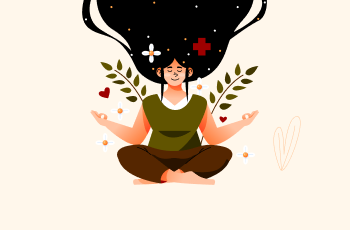Paralysing terror, turbulent contemplations, strained breaths, accelerated pulse: is it a panic attack or an anxiety attack? Well, in the sphere of mental health, terms like “panic attack” and “anxiety attack” are frequently used synonymously, leading to confusion about their definite features and consequences. Panic attacks are common in Australia, affecting a significant portion of the population. When delving into discussions surrounding mental health, differentiating between panic attacks vs. anxiety attacks is crucial. While both involve strong feelings of restlessness and discomfort, they manifest in dissimilar ways and have distinctive characteristics that set them apart. Recognising these differences is pivotal for spot-on diagnosis, effective treatment, and enhanced oversight of these disabling conditions.
Discover how a mental health treatment plan, crafted by a registered doctor, outlines treatment goals for mental health conditions.
In conclusion, comprehending the subtle differences between panic attacks vs. anxiety attacks is of supreme importance. This understanding opens the door for accurate diagnosis, suitable treatment, and elevated management of these conditions. Whether struggling with sudden panic or chronic anxiety, seeking professional help and implementing effective coping mechanisms can encourage mitigation and aid in the pursuit of improved mental well-being.
Panic attack vs. anxiety attack
A panic attack is an instant onset of extreme fear or uneasiness that typically peak within minutes, the overall duration can vary. Some panic attacks may be brief, while others may last longer. It is characterised by an accelerated intensification of physical and psychological symptoms (e.g. rapid heart rate, shortness of breath, sweating, trembling, and feelings of impending doom or loss of control which could be daunting and terrifying) that can be daunting and terrifying. Individuals experiencing a panic attack often describe feeling as though they are losing control or grappling with a life-or-death scenario, even in the absence of any pressing threat. Different from panic attacks, generalized anxiety disorder (GAD) or anxiety episodes are episodes that typically involve persistent feelings of anxiety, worry, and tension rather than sudden, acute symptoms like those seen in panic attacks are usually associated with a more lengthy and persistent state of dread, distress and fear. Individuals with GAD often experience excessive worry and catastrophic thinking about various aspects of life, including future events and potential outcomes.1. Key difference in symptoms: panic attack vs. anxiety attack
While panic attacks and anxiety attacks share some similarities, they differ in symptoms and signs. Let’s check them out.Panic attack symptoms:
- The sudden emergence of intense fear or discomfort
- Fear of losing control
- Shortness of breath
- Rapid heartbeat
- Sweating
- Chest pain
- Nausea
- Dizziness
- Trembling or shaking
- Hot or cold flushes
- Stomach pain
- Tingling or numbness
- Depersonalisation or feelings of detachment
- Fear of dying
Anxiety attack symptoms:
- Muscle tension
- Fatigue
- Irritability
- Nervousness
- Trembling
- Difficulty concentrating
- Sleep disturbances
- Having a sense of approaching danger
- Excessive worrying
- Catastrophic thinking
- Headaches
- Nausea
- Irregular heartbeat
- Feeling lightheaded
- Restlessness
Discover how a mental health treatment plan, crafted by a registered doctor, outlines treatment goals for mental health conditions.
2. Key difference in causes: panic attack vs. anxiety attack
The terms ‘panic attack, and ‘anxiety attack’ are used interchangeably but there are several key differences in their causes, onset, triggers, and severity. Here are some of the major differences in their causes and manifestations:Causes of panic attacks:
- Sudden onset: Most panic attacks start abruptly and peak in a matter of minutes. They frequently happen without a clear cause.
- Extreme fear: The most common sign of a panic attack is an abrupt onset of intense fear frequently accompanied by bodily manifestations including heart palpitations, perspiration, shaking, breathing problems, and chest pain.
- Fight or flight response: It is believed that the body's natural reaction to stress or danger, the fight-or-flight response, sets off panic attacks. Panic attacks, however, can sometimes happen when there isn't a genuine threat or clear cause.
- Psychological component: Panic attacks include a significant psychological component in addition to their physiological symptoms. These psychological symptoms frequently involve a sense of impending doom, fear of losing control or becoming insane.
Causes of anxiety attacks:
- Eventual build-up: Unlike panic attacks, which usually have an abrupt start, anxiety attacks typically include a slow accumulation of stress, anxiety, and tension over time.
- Irrational worry: Excessive sensations of worry, dread, or apprehension that are frequently inappropriate for the real threat or circumstance are what define anxiety episodes.
- Generalised anxiety: Prolonged and excessive concern over a wide variety of ordinary events and activities is a common characteristic of a generalised anxiety disorder (GAD) and other anxiety disorders. Anxiety attacks are frequently linked to these conditions.
- Stressors: Although anxiety attacks are frequently brought on by certain stressors or circumstances that heighten anxiety and distress, they can also occasionally happen without a clear reason.
3. Key difference in prevention and management: panic attack vs. anxiety attack
While stress management techniques and lifestyle adjustments are the measures for both anxiety and panic attack prevention and management, there are differences in the precise therapy approaches used for each illness. Here's a breakdown of their differences in treatment procedures:Prevention and management of panic attacks:
- Identify triggers: Being aware of and able to recognise the things that trigger a panic attack, such as certain circumstances, thoughts, or physiological sensations, can help people prepare for and control their symptoms.
- Cognitive-behavioural strategies: Cognitive-behavioural strategies, such as exposure therapy and cognitive restructuring, can assist people in altering the way they think about and react to panic episodes. This might entail confronting illogical ideas or progressively exposing oneself to events that one fears.
- Relaxation methods: Acquiring and using relaxation methods, such as progressive muscle relaxation, deep breathing, and mindfulness meditation, can assist people in lowering their general stress levels and controlling their panic attacks.
- Medication: In certain situations, a prescription for medication may be given to control panic disorder symptoms. These might include drugs that treat depression or anxiety, which can lessen the frequency and intensity of panic attacks.
Prevention and management of anxiety attacks
- Stress management: Since stressors are frequently the cause of anxiety attacks, practising effective stress management strategies, such as prioritising tasks, managing one's time, and engaging in self-care activities, can help lessen the frequency and severity of anxiety symptoms.
- Therapy: Cognitive-behavioural therapy (CBT), in particular, is a popular choice for treating anxiety episodes. CBT can assist people in recognising and challenging harmful thinking patterns, learning coping mechanisms, and progressively facing their fears.
- Changes in lifestyle: Maintaining a healthy lifestyle can improve general well-being and assist in the management of anxiety symptoms. This includes regular exercise, a balanced diet, enough sleep, and abstaining from drugs like alcohol.
- Medication: Medication may be prescribed to assist treat anxiety episodes, depending on the severity of symptoms and the underlying anxiety problem. These include beta-blockers, antidepressants, and anxiety drugs, all of which can be beneficial.
In conclusion, comprehending the subtle differences between panic attacks vs. anxiety attacks is of supreme importance. This understanding opens the door for accurate diagnosis, suitable treatment, and elevated management of these conditions. Whether struggling with sudden panic or chronic anxiety, seeking professional help and implementing effective coping mechanisms can encourage mitigation and aid in the pursuit of improved mental well-being.
Reference
- Panic attacks and panic disorder - Reference Link












 Facebook
Facebook Instagram
Instagram LinkedIn
LinkedIn


